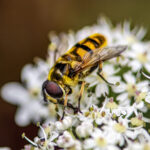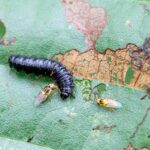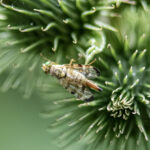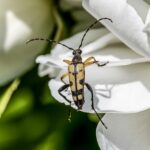Lucilia sericata
Lucilia sericata
A green metallic ‘greenbottle’ fly is the commonest of the very similar Lucilia species. It can be identified by the pale basicosta and a single anterodorsal bristle on the mid-tibia.
It also has a wide frons and much dusting on the thorax. It has 3 acrostichal bristles and 3 dorsocentral bristles after the suture on the thorax.
Chronic wounds
Chronic wounds caused by underlying physiological causes such as diabetic wounds, pressure ulcers, venous leg ulcers and infected wounds affect a significant portion of the population. In order to treat chronic wounds, a strong debridement, removal of necrotic tissue, elimination of infection and stimulation of granulation tissue are required. Maggot debridement therapy (MDT), which is an alternative treatment method based on history, has been used quite widely. MDT is an efficient, simple, cost-effective and reliable biosurgery method using mostly larvae of Lucilia sericata fly species. Larvae can both physically remove necrotic tissue from the wound site and stimulate wound healing by activating molecular processes in the wound area through the enzymes they secrete. The larvae can stimulate wound healing by activating molecular processes in the wound area through enzymes in their excretions/secretions (ES).
Seen in the grounds of Chiswick House and Gardens.






Leave a comment